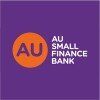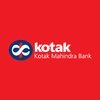
i
Standard
Chartered
Filter interviews by
Standard Chartered Angular Developer Interview Questions and Answers
7 Interview questions
CSS3 Flexbox is a layout module that provides a more efficient way to design and align elements in a container.
Flexbox allows for flexible and responsive layouts without the need for complex CSS hacks.
It uses a parent-child relationship where the parent element is the flex container and the child elements are flex items.
Flexbox provides properties such as flex-direction, justify-content, align-items, and align-sel...
Observables are a way to handle asynchronous data streams in Angular.
Observables are used extensively in Angular for handling events, HTTP requests, and other asynchronous operations.
They are similar to Promises, but can emit multiple values over time.
Observables can be transformed and combined using operators like map, filter, and merge.
They can also be subscribed to, which allows you to receive and handle the em...
Angular Routes are used to navigate between different components and views in an Angular application.
Routes are defined in the app-routing.module.ts file
Each route maps a URL path to a component
Routes can have parameters and child routes
Navigation between routes can be done using routerLink directive or programmatically using Router service
Angular Components are the building blocks of Angular applications.
Components are reusable and self-contained
They have a template, styles, and logic
They can communicate with other components using @Input and @Output decorators
Examples include navbar, sidebar, login form, etc.
What people are saying about Standard Chartered





Angular pipe is a feature that allows transforming data before displaying it in the view.
Pipes are used to format, filter, and transform data.
They can be used in interpolation, property binding, and directive binding.
Built-in pipes include DatePipe, UpperCasePipe, and CurrencyPipe.
Custom pipes can be created using the @Pipe decorator.
Angular directives are markers on a DOM element that tell AngularJS to attach a specified behavior to that DOM element.
Directives are used to create custom HTML tags that serve as new, reusable widgets.
They can be used to manipulate the DOM, add event listeners, and create reusable components.
Some built-in directives include ng-model, ng-repeat, and ng-show.
Directives can be restricted to only apply to certain typ...
Subjects are a type of Observable that can multicast to multiple Observers.
Subjects act as both an Observable and an Observer
They can emit values to multiple subscribers
There are four types of Subjects: BehaviorSubject, ReplaySubject, AsyncSubject, and Subject
Subjects can be used for event handling, state management, and more
Standard Chartered Angular Developer Interview Experiences
1 interview found

(7 Questions)
- Q1. Tell about CSS3 Flexbox
- Ans.
CSS3 Flexbox is a layout module that provides a more efficient way to design and align elements in a container.
Flexbox allows for flexible and responsive layouts without the need for complex CSS hacks.
It uses a parent-child relationship where the parent element is the flex container and the child elements are flex items.
Flexbox provides properties such as flex-direction, justify-content, align-items, and align-self to ...
- Q2. Tell about Angular Directives
- Ans.
Angular directives are markers on a DOM element that tell AngularJS to attach a specified behavior to that DOM element.
Directives are used to create custom HTML tags that serve as new, reusable widgets.
They can be used to manipulate the DOM, add event listeners, and create reusable components.
Some built-in directives include ng-model, ng-repeat, and ng-show.
Directives can be restricted to only apply to certain types of...
- Q3. Tell about Angular pipe
- Ans.
Angular pipe is a feature that allows transforming data before displaying it in the view.
Pipes are used to format, filter, and transform data.
They can be used in interpolation, property binding, and directive binding.
Built-in pipes include DatePipe, UpperCasePipe, and CurrencyPipe.
Custom pipes can be created using the @Pipe decorator.
- Q4. Tell about Angular Components
- Ans.
Angular Components are the building blocks of Angular applications.
Components are reusable and self-contained
They have a template, styles, and logic
They can communicate with other components using @Input and @Output decorators
Examples include navbar, sidebar, login form, etc.
- Q5. Tell about Angular Routes
- Ans.
Angular Routes are used to navigate between different components and views in an Angular application.
Routes are defined in the app-routing.module.ts file
Each route maps a URL path to a component
Routes can have parameters and child routes
Navigation between routes can be done using routerLink directive or programmatically using Router service
- Q6. Tell about Observables
- Ans.
Observables are a way to handle asynchronous data streams in Angular.
Observables are used extensively in Angular for handling events, HTTP requests, and other asynchronous operations.
They are similar to Promises, but can emit multiple values over time.
Observables can be transformed and combined using operators like map, filter, and merge.
They can also be subscribed to, which allows you to receive and handle the emitted...
- Q7. Tell about Subjects in RXJS
- Ans.
Subjects are a type of Observable that can multicast to multiple Observers.
Subjects act as both an Observable and an Observer
They can emit values to multiple subscribers
There are four types of Subjects: BehaviorSubject, ReplaySubject, AsyncSubject, and Subject
Subjects can be used for event handling, state management, and more
Interview Preparation Tips
Skills evaluated in this interview
Interview questions from similar companies

I appeared for an interview before Mar 2016.
Interview Questionnaire
2 Questions
- Q1. Some technical questions were asked
- Q2. They spring hibernate MVC flow and core java and Oracle connectivity questions
Interview Preparation Tips
Experience: There was a Team manager and his junior for the interview

Software Developer Interview Questions & Answers
AU Small Finance Bankposted on 16 Sep 2022
I applied via Campus Placement and was interviewed before Sep 2021. There were 2 interview rounds.
It had more than 30 aptitude questions and 2 coding questions
(1 Question)
- Q1. It was totally a tech round all questions were from Data structure, dbms, java, computer networking
Interview Preparation Tips

Software Developer Interview Questions & Answers
Kotak Mahindra Bankposted on 10 Jul 2024
(2 Questions)
- Q1. LRU cache design
- Ans.
LRU cache design involves maintaining a cache with limited capacity and removing the least recently used item when the cache is full.
Use a doubly linked list to maintain the order of items based on their usage.
Implement a hash map for fast access to items in the cache.
When a new item is accessed, move it to the front of the linked list to mark it as the most recently used.
When the cache is full, remove the item at the ...
- Q2. Current project
Skills evaluated in this interview
What people are saying about Standard Chartered







Simple algorithm question about sorting
(2 Questions)
- Q1. Algorith question about quick sort
- Q2. Nlonn run time of the sort
- Ans.
The time complexity of the quicksort algorithm is O(n log n).
Quicksort has an average time complexity of O(n log n).
The best case time complexity of quicksort is O(n log n) when the pivot element divides the array into two equal halves.
The worst case time complexity of quicksort is O(n^2) when the pivot element is the smallest or largest element in the array.
Skills evaluated in this interview

Software Developer Interview Questions & Answers
Kotak Mahindra Bankposted on 16 Oct 2024
I applied via LinkedIn and was interviewed in Apr 2024. There was 1 interview round.
1)Buy and sell stock
2)2 sum
3) system design
4) Elastic search
5) deployment

Software Developer Interview Questions & Answers
AU Small Finance Bankposted on 29 Apr 2025
I appeared for an interview in Oct 2024, where I was asked the following questions.
- Q1. What is HTML?
- Ans.
HTML stands for Hyper Text Markup Language. HTML is the standard markup language for creating Web pages. HTML describes the structure of a Web page. HTML consists of a series of elements. HTML elements tell the browser how to display the content.
- Q2. What is CSS?
- Ans.
Cascading Style Sheets (CSS) is a stylesheet language used to describe the presentation of a document written in HTML or XML (including XML dialects such as SVG, MathML or XHTML). CSS describes how elements should be rendered on screen, on paper, in speech, or on other media.
- Q3. What is MySQL?
- Q4. What is Java?
- Q5. What is the full form of PHP?
- Ans.
The full form of PHP is Hypertext Preprocessor. It was abbreviated previously as Personal Home Page. It is a programming language widely used to build web applications or websites.
Interview Preparation Tips

Joins, Jobs, stored procedures,cursors.
(1 Question)
- Q1. What is my package

I applied via Recruitment Consulltant and was interviewed in Nov 2021. There were 3 interview rounds.
Basic data structure related coding questions like creating a linked list and adding items to it median.
Max heap implementation.
Concurrency related questions.
(1 Question)
- Q1. Senior developer was taking the round, covering all design and architecture related questions. I was able to give a satisfactory solution.
(1 Question)
- Q1. Just some behavioural question along with a lil bit technical questions. Asked me about my current projects and problems faced, how i gave a proper solution and how i help my team to grow.
Interview Preparation Tips

Software Developer Interview Questions & Answers
ICICI Bankposted on 10 Mar 2022
Topic wt is ms office
Eassys dscover the basic structure of all essaysand see what a goo d essay introduction and conclusion look like
(1 Question)
- Q1. Ppt presentations and techical skillsare the abilities and knowledge needed to performtastks
Interview Preparation Tips
Standard Chartered Interview FAQs
Tell us how to improve this page.
Standard Chartered Interviews By Designations
- Standard Chartered Senior Manager Interview Questions
- Standard Chartered Software Developer Interview Questions
- Standard Chartered Associate Manager Interview Questions
- Standard Chartered Manager Interview Questions
- Standard Chartered Team Lead Interview Questions
- Standard Chartered Senior Analyst Interview Questions
- Standard Chartered Specialist Interview Questions
- Standard Chartered Relationship Manager Interview Questions
- Show more
Interview Questions for Popular Designations
- Software Developer Interview Questions
- Front end Developer Interview Questions
- Web Developer Interview Questions
- Senior Software Developer Interview Questions
- Junior Software Developer Interview Questions
- Developer Interview Questions
- UI Developer Interview Questions
- Angular Frontend Developer Interview Questions
- Show more
Interview Questions from Similar Companies
|
Team Lead
2.5k
salaries
| ₹4.8 L/yr - ₹11 L/yr |
|
Associate Manager
2.4k
salaries
| ₹8.8 L/yr - ₹15.6 L/yr |
|
Senior Officer
2.3k
salaries
| ₹3.1 L/yr - ₹7.2 L/yr |
|
Manager
2.2k
salaries
| ₹14 L/yr - ₹24.3 L/yr |
|
Senior Manager
2.1k
salaries
| ₹21.8 L/yr - ₹38.2 L/yr |

HDFC Bank

ICICI Bank

Axis Bank

Kotak Mahindra Bank
- Home >
- Interviews >
- Standard Chartered Interview Questions










